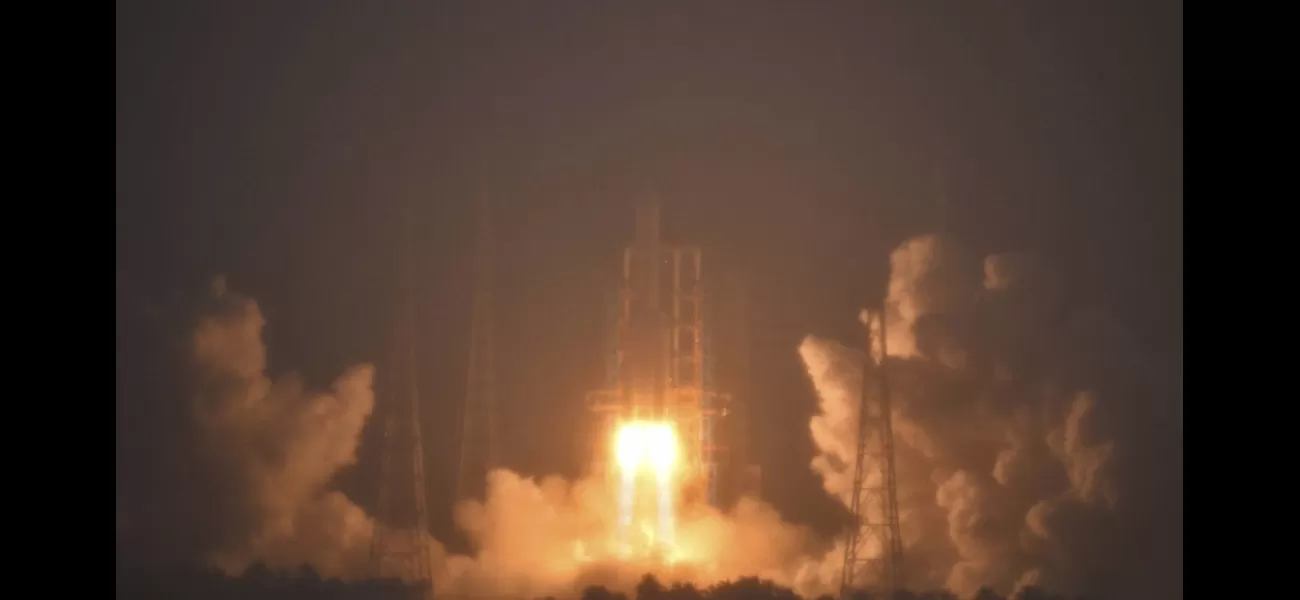China launches a mission to collect samples from the dark side of the moon.
China sent a spacecraft to the far side of the moon to collect samples and learn more about its differences from the near side. #LunarExploration
May 3rd 2024.

China has recently taken a giant leap in their space exploration program by launching a lunar probe to the far side of the moon. This probe is set to collect samples and provide valuable insights into the differences between this uncharted region and the more familiar near side. This is just one of the many impressive advancements in China's ever-evolving space program, which is now in direct competition with the United States, a country that has long been considered the leader in space exploration.
Back in 2019, China made history by becoming the first country to successfully land a rover on the far side of the moon. Then in 2020, they achieved another milestone by collecting samples from the near side, something that hadn't been done since the 1970s. These samples were analyzed and found to contain water, which was a groundbreaking discovery. China also currently has a three-member crew on their own orbiting space station and has set a goal to send astronauts to the moon by 2030.
Looking ahead, China has three lunar probe missions planned over the next four years, with the first one launching just last week from the Wenchang launch center in Hainan. This mission is named after Chang'e, the Chinese mythical moon goddess, and is a source of great pride for the Chinese people. The launch drew a huge crowd of spectators, as it coincided with China's five-day May Day holiday.
Once the probe reaches the moon, it will orbit to reduce its speed before the lander separates from the returner and begins its task of collecting samples. The far side of the moon is an ideal location for scientific work, as it is shielded from interference from Earth. However, this also means that a relay satellite is needed to maintain communication between the probe and Earth.
China's ultimate goal is to establish a permanent crewed base on the lunar surface, but this is still in the planning stages. In the meantime, they have successfully launched their own space station, Tiangong, which is smaller than the International Space Station (ISS) but can accommodate up to six astronauts at a time. This station will be used for scientific research, payload experiments, and even beaming science classes to students on Earth.
While the US still holds a significant edge over China in terms of spending, supply chains, and capabilities, China's ambitious space program continues to make impressive strides. They have even expressed a desire to eventually open their space station to foreign astronauts and space tourists. With the ISS nearing the end of its useful life, China may become the sole country or corporation to maintain a crewed station in orbit. However, the US is also ramping up their efforts and aims to send a crew back to the moon by 2025 with the help of private companies like SpaceX and Blue Origin.
In the end, this competition between China and the US could lead to great advancements in space exploration for the benefit of all humankind. And with China's plans to eventually land on the moon's south pole, where frozen water is believed to be abundant, there is much to look forward to in the world of space travel.
Back in 2019, China made history by becoming the first country to successfully land a rover on the far side of the moon. Then in 2020, they achieved another milestone by collecting samples from the near side, something that hadn't been done since the 1970s. These samples were analyzed and found to contain water, which was a groundbreaking discovery. China also currently has a three-member crew on their own orbiting space station and has set a goal to send astronauts to the moon by 2030.
Looking ahead, China has three lunar probe missions planned over the next four years, with the first one launching just last week from the Wenchang launch center in Hainan. This mission is named after Chang'e, the Chinese mythical moon goddess, and is a source of great pride for the Chinese people. The launch drew a huge crowd of spectators, as it coincided with China's five-day May Day holiday.
Once the probe reaches the moon, it will orbit to reduce its speed before the lander separates from the returner and begins its task of collecting samples. The far side of the moon is an ideal location for scientific work, as it is shielded from interference from Earth. However, this also means that a relay satellite is needed to maintain communication between the probe and Earth.
China's ultimate goal is to establish a permanent crewed base on the lunar surface, but this is still in the planning stages. In the meantime, they have successfully launched their own space station, Tiangong, which is smaller than the International Space Station (ISS) but can accommodate up to six astronauts at a time. This station will be used for scientific research, payload experiments, and even beaming science classes to students on Earth.
While the US still holds a significant edge over China in terms of spending, supply chains, and capabilities, China's ambitious space program continues to make impressive strides. They have even expressed a desire to eventually open their space station to foreign astronauts and space tourists. With the ISS nearing the end of its useful life, China may become the sole country or corporation to maintain a crewed station in orbit. However, the US is also ramping up their efforts and aims to send a crew back to the moon by 2025 with the help of private companies like SpaceX and Blue Origin.
In the end, this competition between China and the US could lead to great advancements in space exploration for the benefit of all humankind. And with China's plans to eventually land on the moon's south pole, where frozen water is believed to be abundant, there is much to look forward to in the world of space travel.
[This article has been trending online recently and has been generated with AI. Your feed is customized.]
[Generative AI is experimental.]
0
0
Submit Comment





